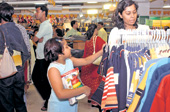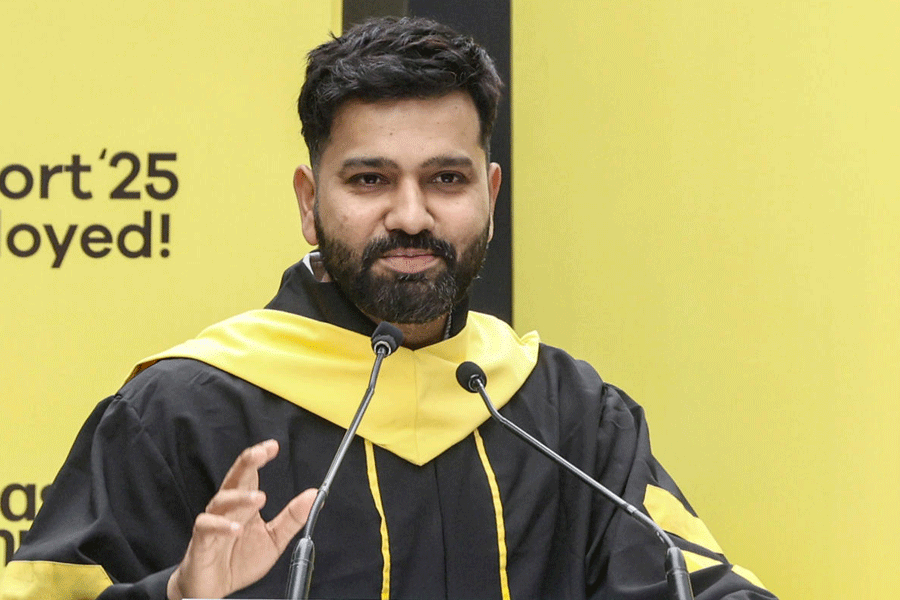 |
| Pester power: Eighty per cent of the products purchased in a household are decided by children |
On a visit to the Pacific Mall in east Delhi, 17-year-old Shubhi Sharma noticed a hassled elderly couple. The lady was on the verge of choking and her husband was desperately running around for a glass of water. As there was no water dispenser in the mall, the man had to finally queue up for a token to buy a bottle of water from the food court in the mall.
This incident got Shubhi thinking. The Class XII student of Bal Bharati School, Ghaziabad, discussed the issue with members of the consumer club in her school. Egged on by their teacher, Shubhi and a few classmates surveyed malls in the adjoining area and found that none of them offered shoppers drinking water. They then submitted their report to Voluntary Organisation in Interest of Consumer Education (VOICE), a Delhi-based non-governmental organisation, which plans to take up the issue with the mall authorities.
Since the introduction of a consumer club in their school in 2005, students have been part of many such consumer projects. An initiative of the ministry of consumer affairs, consumer clubs are empowering youngsters by making them aware of their rights. “We want students to be aware of their rights and help them to assert them in public spaces as well,” says Roopa Vajpeyi, honorary editor of Consumer VOICE, Delhi. The NGO has been co-ordinating with the clubs in Delhi.
As part of this project, 50 consumer clubs operate in Delhi. Consumer clubs have also been actively functioning in Tamil Nadu, Andhra Pradesh, Gujarat and West Bengal. Each school is allotted Rs 8,000 every year by the ministry to run a consumer club. Some schools, however, are running independent clubs.
With changing consumption patterns, children today are clearly voicing their choices regarding food, clothing and household products. Parents too permit their children to take decisions when shopping. “Eighty per cent of the products purchased in a household are decided by children. We call it pester power,” points out Vajpeyi. The ad world too is increasingly targeting them. In this scenario, it becomes very important for children to be sensitised about consumer issues and their rights.
The clubs, therefore, teach children about the over-pricing of products, weights and measures, the reality behind marketing strategies and sales promotions, misleading advertising, consumer redressal fora and water and power conservation.
“Children don’t value money and are easily lured by advertisements. In the consumer club, we talk about faulty practices adopted by shopkeepers. We tell them to check labels, the maximum retail price (MRP) and expiry dates before purchasing products,” says Muneera Siddiqui, consumer club co-ordinator at Bal Bharati School. This consumer club meets every month and comprises students from classes VIII to XII.
An important function of the consumer clubs is environmental sensitisation. Students are encouraged to conserve water, use paper bags instead of polythene bags, use natural colours during Holi and are taught about the misuse of electricity. As part of the consumer club initiatives, canteens in many schools junked fast food and switched to juices and health food.
All this learning happens through debates, street plays, poster competitions and live projects. For instance, consumer club members of Hansraj Model School in Delhi visited departmental stores to learn more about bills and maintenance of monthly accounts. Students from Ahmedabad International School, Gujarat, were taught about food adulteration as they did live projects to check adulteration in milk. Poster competitions and debates on consumer issues make the learning process competitive. “Students are also more enthusiastic when it comes to winning prizes,” points out Nidhi Agarwal, who is in charge of the consumer club at Gyan Bharati Public School, Delhi.
As advertising plays a powerful role in shaping consumer perception, children spoof ads in street plays. They also write about consumer issues in newsletters and school magazines.
Student members are also encouraged to take responsibility and are delegated simple tasks in school. For instance, they are made aware about water conservation and the upkeep of water filters and food products in the canteen. They also do follow-ups with the manufacturer or dealer if a problem crops up. “This makes them more accountable and boosts their confidence. It also acquaints them with the world outside their school campus,” says Vajpeyi. Some schools have also appointed students as “brand ambassadors”. These ambassadors visit neighbouring residential areas and educate people about consumer issues.
Teachers agree that consumer clubs have been an eye opener for students. “Children have become more empowered. They are asking questions more than ever before and are also saving money,” says Ajay Nair, teacher and consumer club in-charge of Ahmedabad International School. Agrees Teena Chopra, former president of the consumer club at Bal Bharati School. “Earlier, we were casual about consumer issues. But now we have become more assertive. Previously if I bought a product and it did not work well, I would not do anything about it. But now I go back to the shop and tell the shopkeeper to change the product.”
Clearly, consumer clubs are shaping better customers for tomorrow.










